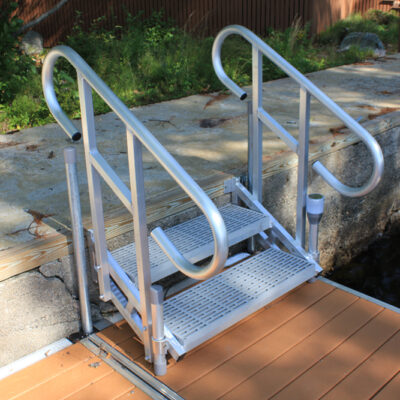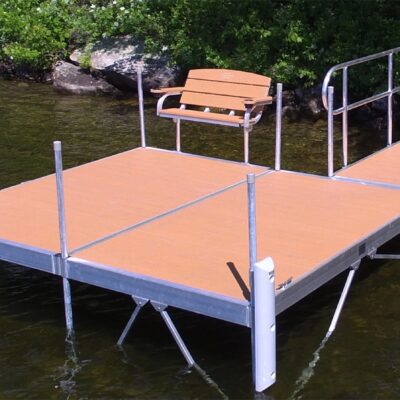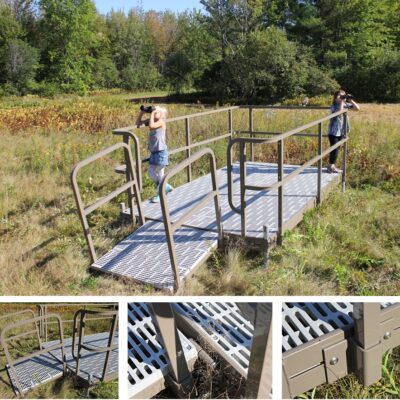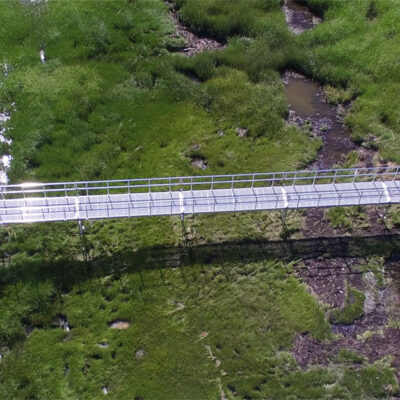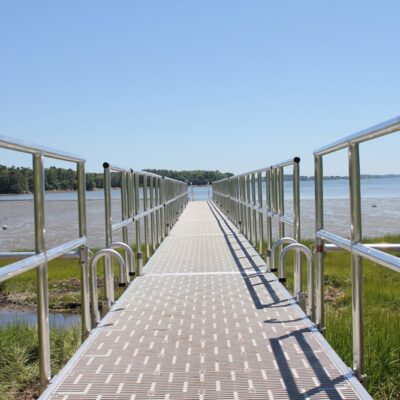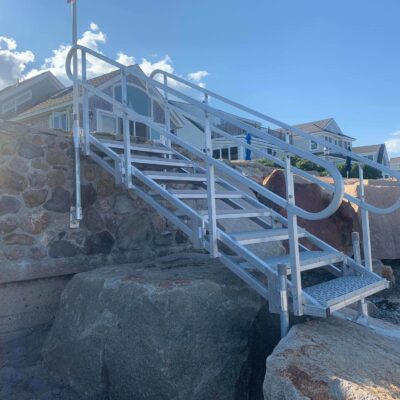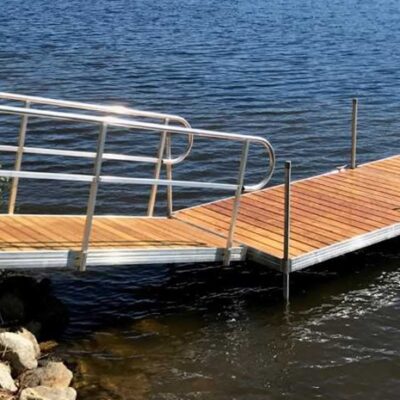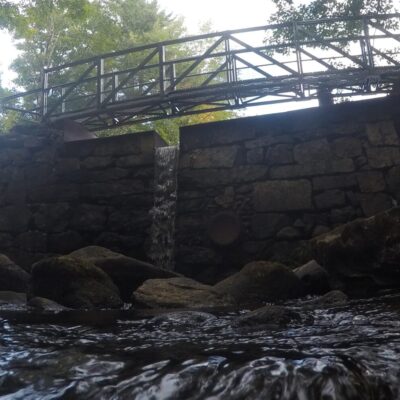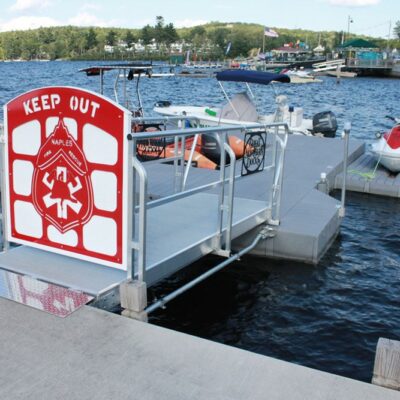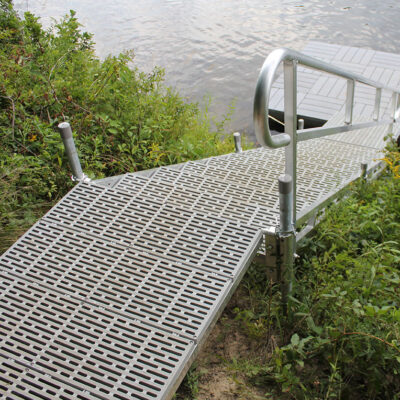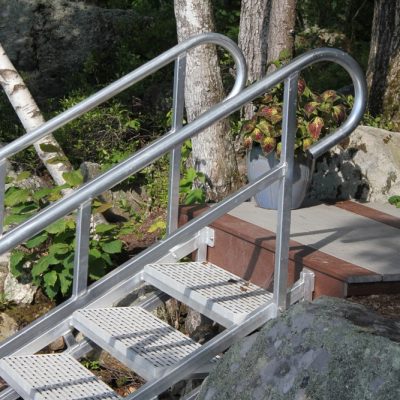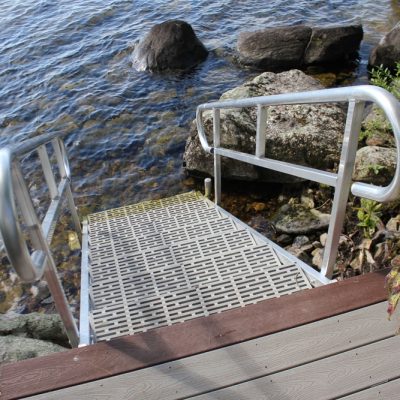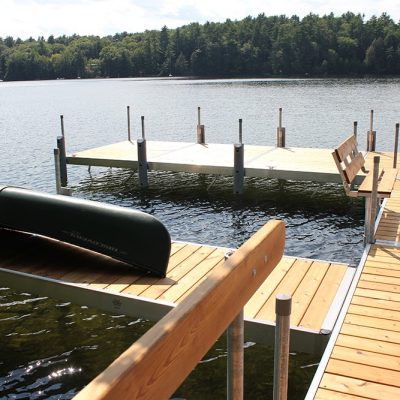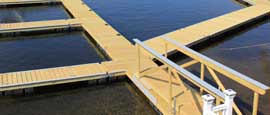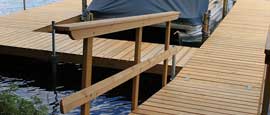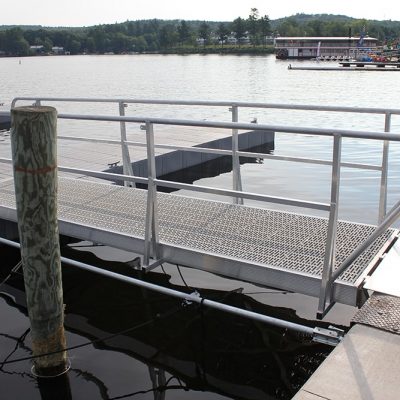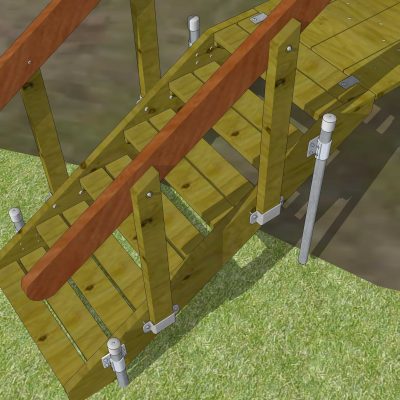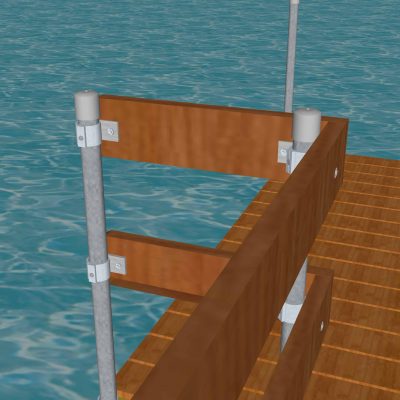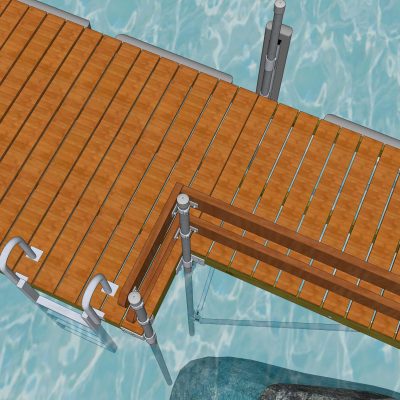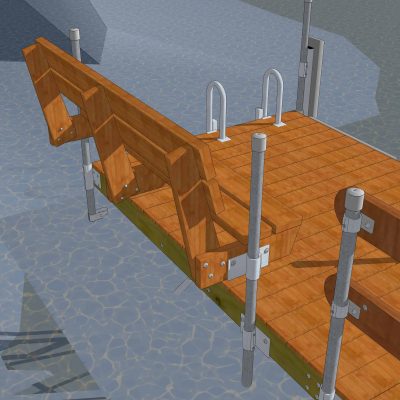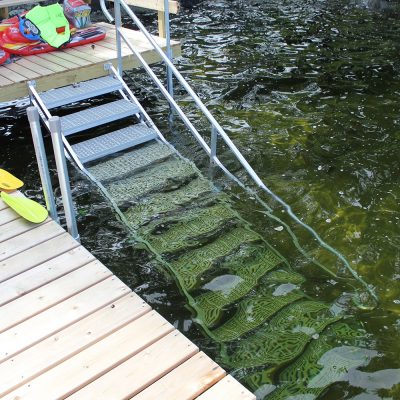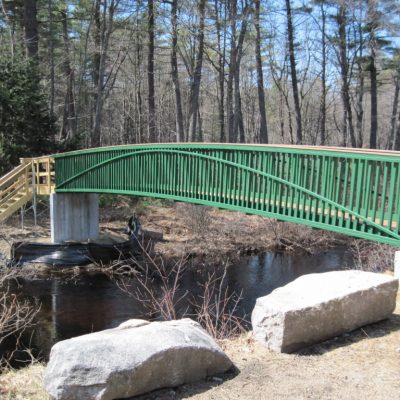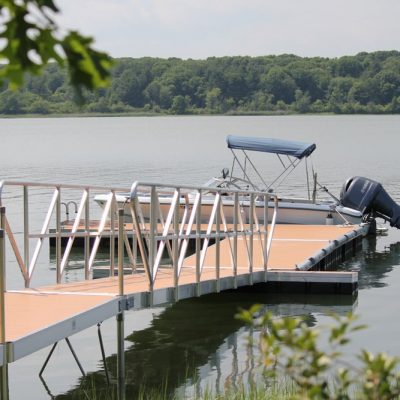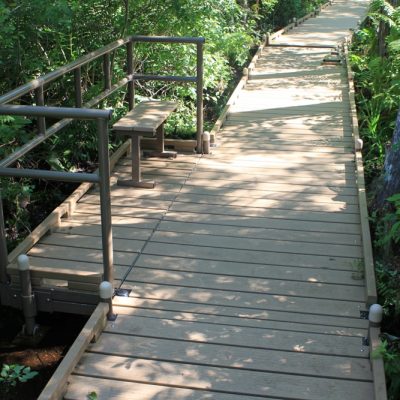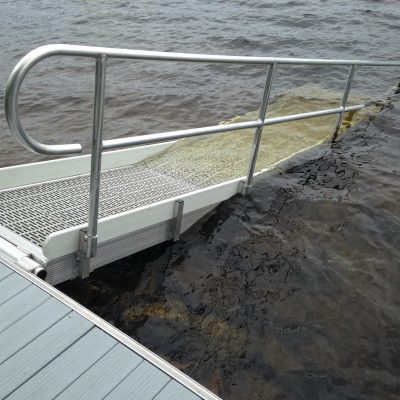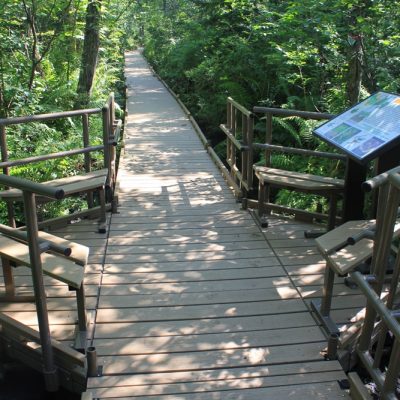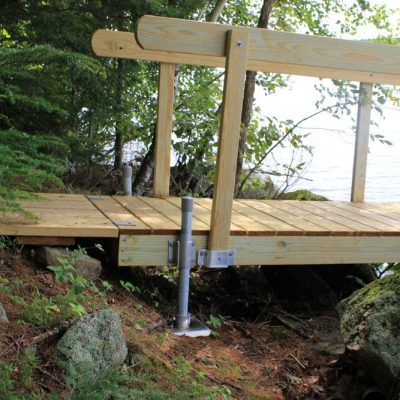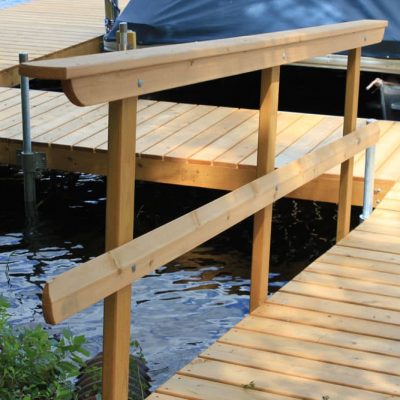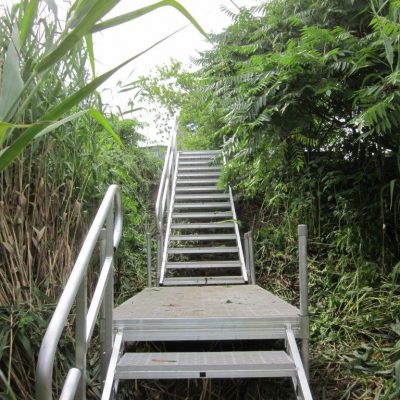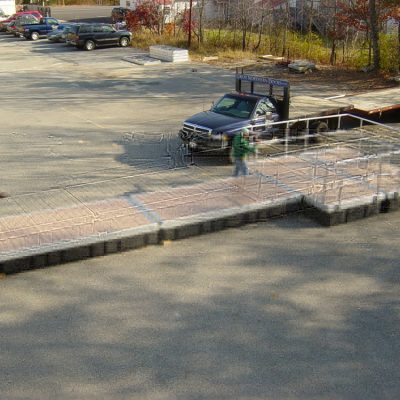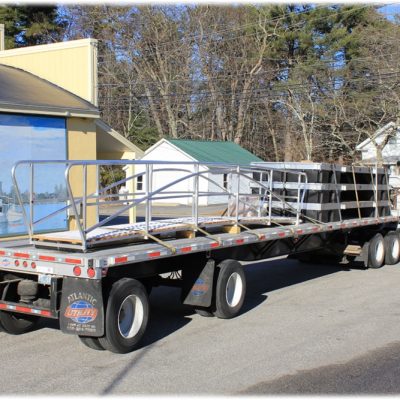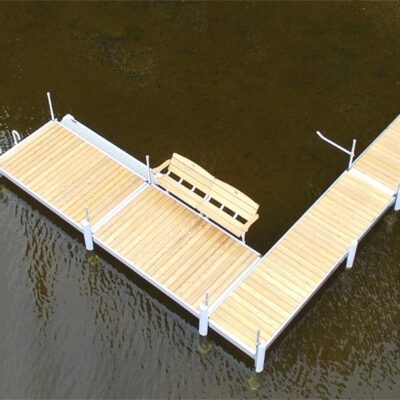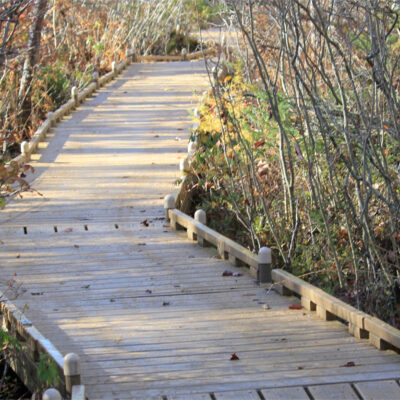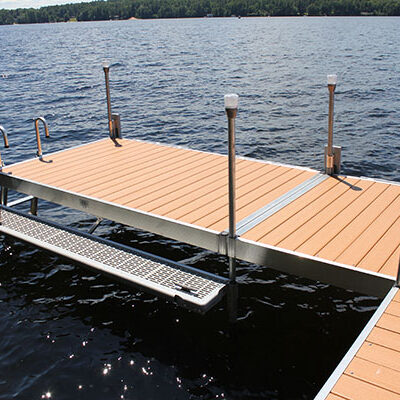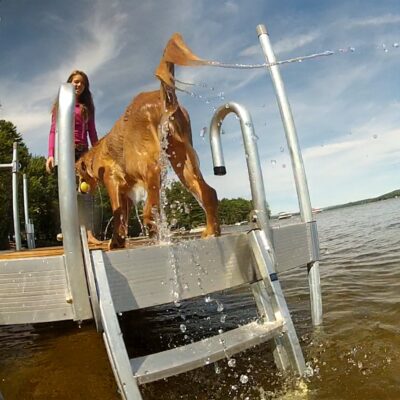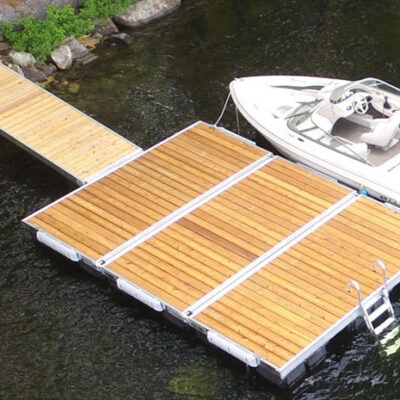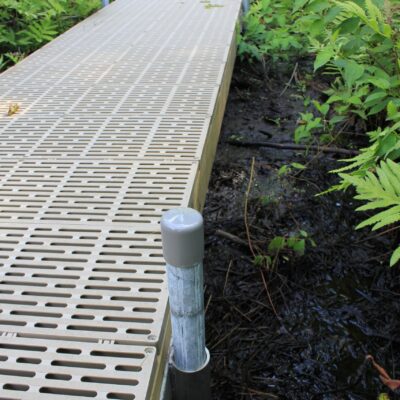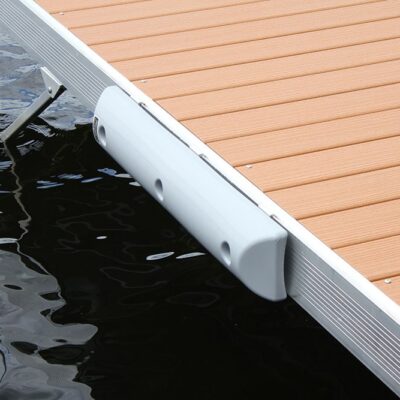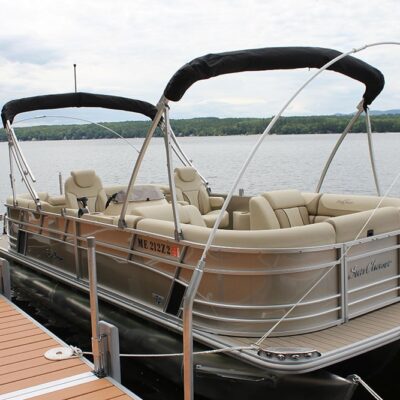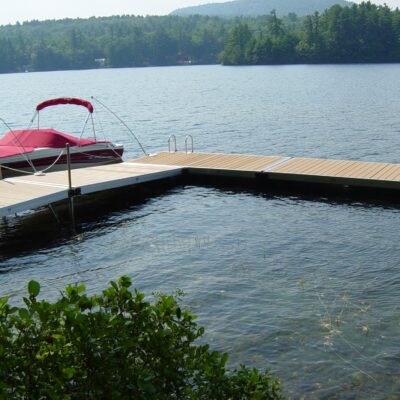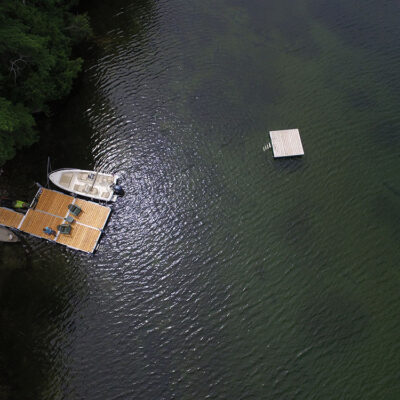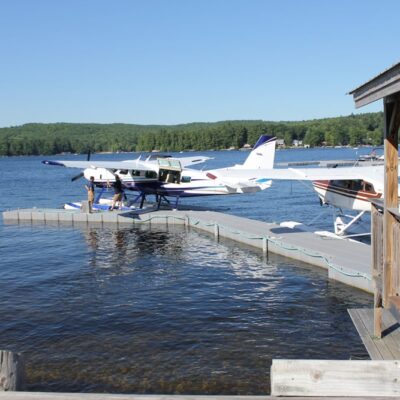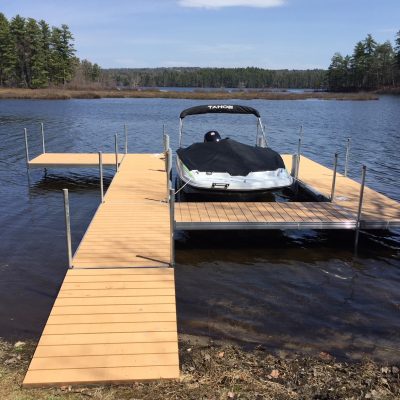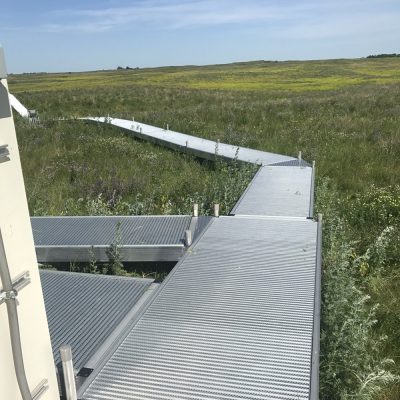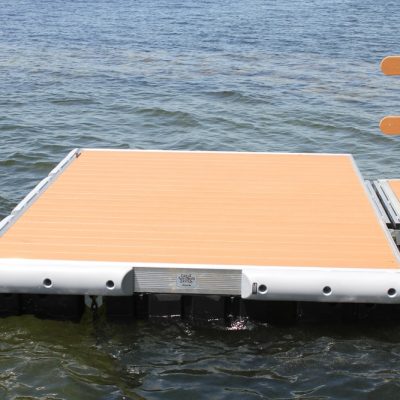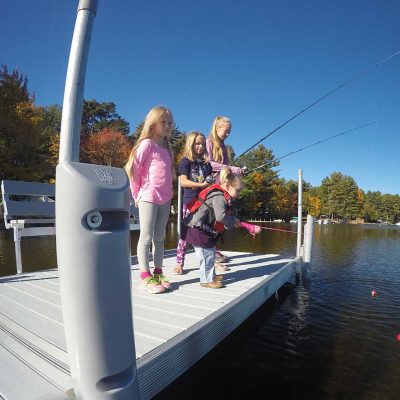When to Use Dock Railings
Safety Matters!
Dock handrails are optional but when are they really needed, they will dramatically add to the safety and stability of those who travel along. Great Northern Docks is able to utilize railings along stairs, ramps, and docks improving security and safety by preventing falls, guarding against
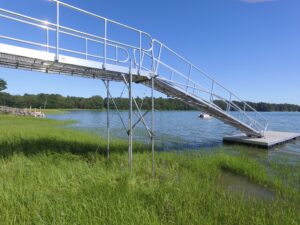
potential hazards of terrain, and providing a place for one to maintain balance, whether they are walking upon a floating dock in rough conditions or are just in need of a little extra support for great-grandma and great-grandpa.
Walking Safely Along Ramps and Stairs with the Aid of Rails
A person will naturally feel safer walking next to a handrail than the edge of a ramp that is close to the water or stairs on a ledge where it is a long way down to the ground below. Railings are very useful on stairs and ramps, and may very well be necessary, even if only on one side of the structure. Stairs have level steps so slipping backward is not as likely as it would be on a ramp, so we often only use one stair rail on the customer’s preferred side. However, a tidal ramp may be too steep at low tide, making the need for handrails on both sides imperative so that one may pull themselves up the ramp to climb back to the top, or by providing stability as one descends, so there is less likelihood of falling. When stairs run along a steep embankment or cliff, we suggest the handrail be installed on the outside edge, away from the ground or ledge where the drop is much greater.
Know Your Shore and What’s Beneath the Surface
Docks over rocky shorelines could have handrails for safety and might be even more needed when the lake water level drops exposing rocks that are farther below the deck surface. During the peak season when the water is high, the dock may feel safe while traversing but when the lake drops exposing the rocks, it can feel like walking a thin line. Assessing property conditions throughout the seasons and watching the fluctuations of water up and down and what becomes exposed during low water levels can help determine just how many railings should be utilized along the dock, stair, or ramp sides.
ADA Compliance
Sometimes handrail is needed for ADA compliance. Handrails are often installed on all sides of public observation docks and birding stations.
When Not to Use Dock Railings
When a dock or boardwalk is low to the ground, it feels wider and there is less need for a hand rail. You may want to leave an open area in the hand railing for the boarding of boats. If you have kayaks or canoes and you want to bring up your dock, ramp, or stairs you may only want railing on one side for clearance for those or other large waterfront toys. Maybe you want to reel in a fish, but not through, or over a hand rail.
Do we put hand rails everywhere else? Not usually, that would be unnecessary as installing and removing hand rail takes time and more work for the in and out of a seasonal dock. Handrails are your choice and can go all around the perimeter, but are not always needed and should not be in places where boats will bang into them.
Great Northern Docks standard railings are a top rail with a mid rail. The Aluminum Dock rail is made to attach to the DuraLITE and FeatherLITE dock frames. The stair rail is made to attach to either or both sides of the stairs.
Great Northern Docks also offers DIY brackets for your own hand made wood railings for wood docks or wood stairs. Great Northern Docks has a line of pipe brackets that can also be used for DIY rails that attach to the dock pipe size 1.5″ schedule 40.
This pipe can be driven into the ground for the vertical railing uprights of your DIY hand rails running on flat ground or down a hill next to an outdoor walkway that may include stepping stones or pea gravel.
No matter how you are feeling on your feet on any given day, the hand rail products by Great Northern Docks are something for everyone to grab on to.





